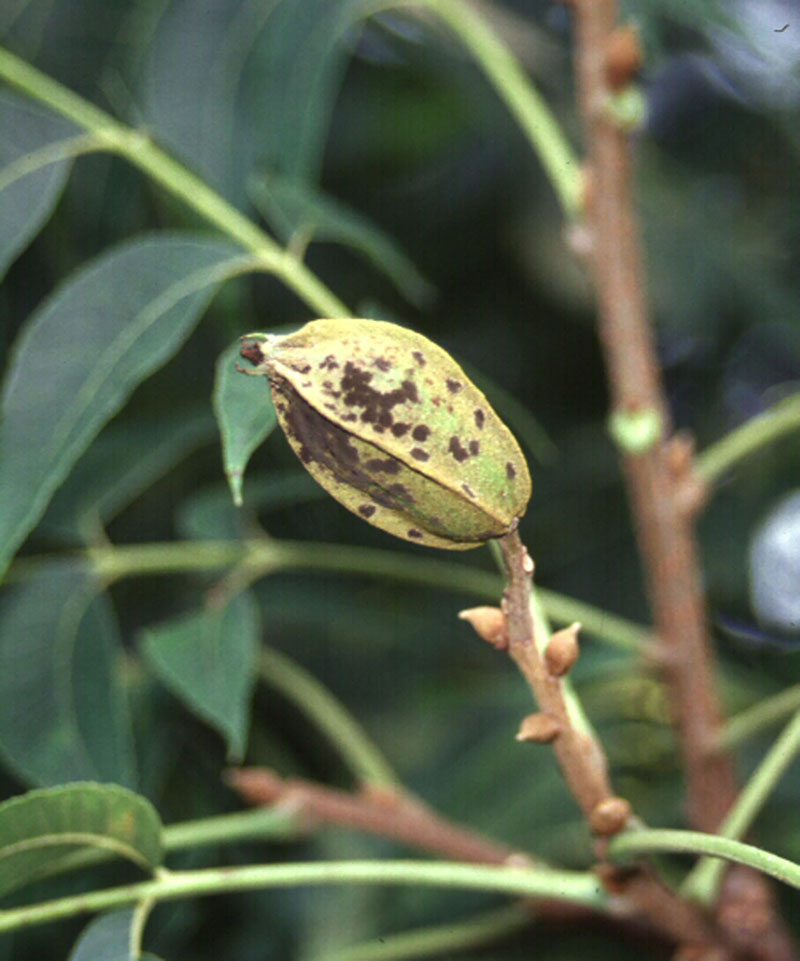By Clint Thompson
Fungicide applications for pecan scab disease are more effective when implemented on a regular schedule. However, that is easier said than done for pecan producers, believes Tim Brenneman, a plant pathologist with the University of Georgia.

“The bottom line is the best way to save money on sprays would be to not spray in the dry periods and spray in the wet periods. It’s easy to say but difficult to do,” Brenneman said. “This year we had a lot of guys going in saying, ‘I’m going to have to save money.’ They sat back and said, ‘I’m only going to spray like eight times.’ Well, you have weather like we had this year and susceptible varieties, that didn’t work.”
Southeast pecan producers had to overcome almost two weeks of consecutive rainfall in June. With a substantial amount of older but susceptible varieties like Desirable still in production, growers must keep a tight spray program if they expect to produce a crop.
“With these susceptible varieties such as Desirable – there’s a whole fleet with similar susceptibility – it’s really hard to do anything except spray them on a pretty regular basis,” Brenneman said.
Scab Resistance
Brenneman and UGA Extension continue to advise growers to plant more scab-resistant varieties moving forward. It would save farmers money on fungicide expenses plus not expose the crop to the disease during prolonged wet periods.
“If you look at the nurseries, some of the nurseries don’t even produce Desirable anymore. Down the further south you go in the state, get over around Albany and some of the historic pecan areas where pressure is really high, I would never recommend that someone plant Desirable,” Brenneman said.
Other alternative management options include hedging or any practice that will open the orchard to air flow. Any way the grower can get sunlight penetration into the orchard will help stave off the disease from spreading.










